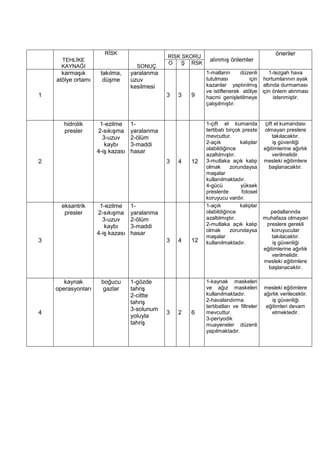BMW, Porsche, And The China Conundrum: A Deeper Dive Into Market Pressures

Table of Contents
Intensifying Competition from Domestic Brands
The rise of powerful domestic players is a significant challenge to established luxury brands in China. This competition manifests in two key areas: the explosive growth of Chinese EV manufacturers and the enhanced brand perception of domestic luxury car makers.
Rise of Chinese EV Manufacturers
The rapid growth of domestic electric vehicle (EV) manufacturers like BYD, NIO, and Xpeng is significantly impacting the luxury segment. These brands are not just offering compelling technology, but also competitive pricing and a strong national appeal, resonating deeply with Chinese consumers.
- Increasing market share of Chinese EV brands in the luxury segment: Data shows a steady climb in market share for these brands, eating into the traditional dominance of foreign luxury carmakers. This signifies a significant shift in consumer preference.
- Technological advancements in Chinese EVs challenging established players: Chinese EV manufacturers are pushing technological boundaries, introducing innovative features and performance capabilities that rival, and in some cases surpass, those of established players. This includes advancements in battery technology, autonomous driving capabilities, and connected car features.
- Aggressive pricing strategies by domestic brands: Domestic brands often leverage economies of scale and government support to offer competitive pricing, making luxury EVs more accessible to a wider range of Chinese consumers.
Enhanced Domestic Brands' Brand Perception
Chinese luxury brands are actively building their brand image and reputation, both domestically and internationally. This strategic approach is enhancing their competitiveness against international rivals.
- Increased marketing and branding efforts by Chinese luxury car makers: Significant investments in marketing and branding campaigns are helping elevate the perception of these brands. This includes collaborations with celebrities, sponsorships of major events, and targeted digital marketing strategies.
- Focus on advanced features and luxury appointments to compete with established brands: Domestic brands are emphasizing high-quality materials, advanced technology, and luxurious appointments to directly compete with established luxury brands on features and perceived value.
- Leveraging national pride to gain market share: A strong sense of national pride plays a significant role, with many Chinese consumers actively supporting domestic brands. This patriotic sentiment is a powerful driver of market share growth for Chinese automakers.
Evolving Consumer Preferences and Demands
Understanding the evolving demands of the Chinese consumer is paramount for success. The market is characterized by a strong shift towards electrification and a significant focus on digitalization and connectivity.
Shifting Towards Electrification
Chinese consumers are increasingly embracing electric and hybrid vehicles, placing greater emphasis on sustainable transportation options. This demand is pushing luxury brands to accelerate their electrification strategies.
- Growing demand for EVs and PHEVs in the Chinese luxury car market: Sales figures clearly demonstrate the escalating demand for electric and plug-in hybrid electric vehicles (PHEVs) within the Chinese luxury car segment.
- Need for increased investment in electric vehicle infrastructure: The successful adoption of EVs requires significant investment in charging infrastructure across China, a crucial factor influencing consumer adoption.
- Consumer preference for advanced driver-assistance systems (ADAS): Features like lane keeping assist, adaptive cruise control, and automatic emergency braking are highly valued by Chinese luxury car buyers.
Focus on Digitalization and Connectivity
Beyond the vehicle itself, Chinese consumers expect seamless integration with the digital world. This is a crucial area where luxury brands need to excel.
- Growing demand for in-car entertainment and infotainment systems: Sophisticated infotainment systems offering a wide range of entertainment options are a key differentiator in the market.
- Importance of seamless smartphone integration and connectivity: Features like Apple CarPlay and Android Auto, along with robust connectivity, are considered essential by Chinese consumers.
- Need for advanced digital services and personalization options: Personalized experiences and access to a wide range of digital services through the vehicle are becoming increasingly important.
Navigating Regulatory Hurdles and Government Policies
The Chinese government plays a significant role in shaping the automotive market, with regulations and policies presenting both challenges and opportunities.
Stringent Emission Standards
China is leading the way in implementing stricter emission regulations, forcing automakers to accelerate their electrification plans. Failure to comply has serious consequences.
- Compliance with increasingly stringent fuel efficiency and emission standards: Meeting these standards requires significant investment in research and development of cleaner powertrains.
- Investment in research and development of electric and hybrid powertrains: Automakers must commit substantial resources to developing and producing electric and hybrid vehicles to meet these requirements.
- Potential penalties for non-compliance with environmental regulations: Non-compliance can lead to substantial financial penalties, impacting profitability and market position.
Government Support for Domestic Brands
Government policies often favor domestic automakers, creating an uneven playing field for foreign brands.
- Subsidies and incentives for Chinese EV manufacturers: Government subsidies and incentives provide a significant competitive advantage to Chinese EV manufacturers.
- Preferential treatment in government procurement and tenders: Domestic brands often receive preferential treatment in government contracts and procurement processes.
- Potential limitations on foreign investment in the automotive sector: Regulations related to foreign investment can create hurdles for international companies seeking to expand in the Chinese market.
Conclusion
The China conundrum for BMW, Porsche, and other international luxury brands is multifaceted and requires a sophisticated approach. Successfully navigating this complex market demands a strategic response that addresses intensified competition, evolving consumer preferences, and regulatory hurdles. Adapting to the unique demands of the Chinese market through localization, technological innovation, and a deep understanding of consumer behavior will be crucial for maintaining competitiveness and market share in this dynamic and increasingly important automotive landscape. To stay ahead in this challenging yet rewarding market, continuous monitoring of the evolving China conundrum, including the nuances of the Chinese EV market and government policy, is essential for all luxury automotive players.

Featured Posts
-
 Inscripciones Cierran En 3 Dias Boxeo En Edomex
Apr 30, 2025
Inscripciones Cierran En 3 Dias Boxeo En Edomex
Apr 30, 2025 -
 Nothing Phone 2 A Modular Phone Revolution
Apr 30, 2025
Nothing Phone 2 A Modular Phone Revolution
Apr 30, 2025 -
 Open Ais Chat Gpt Under Ftc Scrutiny Implications For The Future Of Ai
Apr 30, 2025
Open Ais Chat Gpt Under Ftc Scrutiny Implications For The Future Of Ai
Apr 30, 2025 -
 Mwed Srf Meashat Shhr Abryl 2025 Llmwatnyn 13 Mlywn Mstfyd
Apr 30, 2025
Mwed Srf Meashat Shhr Abryl 2025 Llmwatnyn 13 Mlywn Mstfyd
Apr 30, 2025 -
 Goeruenmez Tehlike Nevsehir De Yueksekten Duesme Kazasi Detaylari
Apr 30, 2025
Goeruenmez Tehlike Nevsehir De Yueksekten Duesme Kazasi Detaylari
Apr 30, 2025
